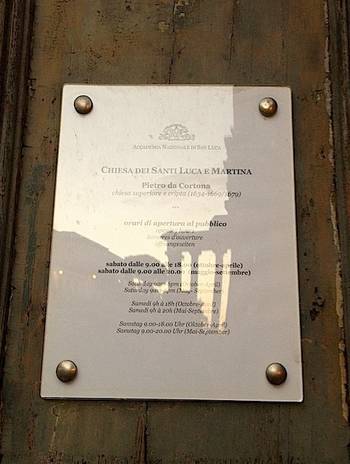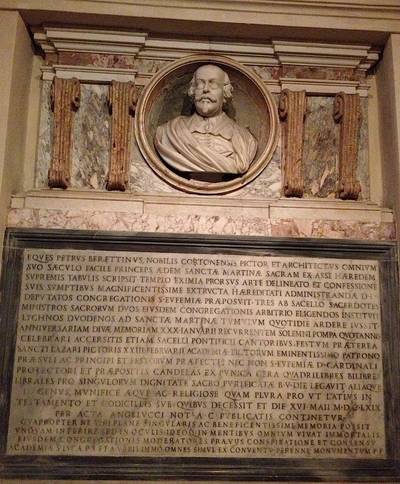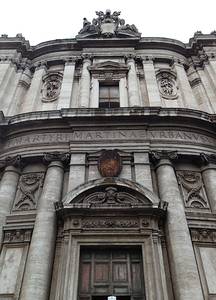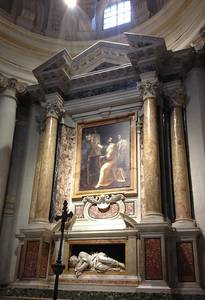Last week, for the first time in my life, I visited Rome without going into the Forum. Usually I pop in to check out any new developments, to visit parts of it that were roped off the last time, or simply to enjoy the thrill of just being there. But this time, I have to confess, I couldn’t face it. Rome seems more crowded every year. Not very long ago, the Forum was free. You could wander in at will at any time of day or night. Now there are fences and turnstiles. The exit beside the Arch of Septimius Severus, with its high barricade and tall barred gate looks like something from a high-security prison. No way in. Did I really want to fight my way through the crowds along Via dei Fori Imperiali, past the gaudy carts selling fizzy drinks and hot dogs, to join the long, long line at the ticket office? No. I couldn’t face it.
But just when I begin to think curmudgeonly thoughts, that Rome has had its day, has lost its elegance and charm, I see something to make me fall in love with it all over again. It always happens and this afternoon was no exception. I glanced behind me at Pietro da Cortona’s severely symmetrical façade of SS. Luca e Martina. The door was closed as usual, but there was a notice on it that I had never seen before. I rushed up the steps to take a closer look and this is what I saw:

Oh joy! The sign itself was beautiful, with the tall columns of the Temple of Saturn reflected in its shiny plastic surface. But its message was even better: the church would be open on Saturday! A miracle! This church isnever open…
Well, it is now. On Saturdays, from 9–6 in October to April and from 9–8 in May to September.
The first church on this site was built by Pope Honorius I in the seventh century. Honorius’ pontificate was not uniformly glorious but he was particularly keen on building or embellishing churches on the site of martyrdoms and to him we owe the lovely basilica of Sant’Agnese fuori le Mura (as well as the Senate House in the Forum, which has survived so well because he converted it into the church of Sant’Adriano). This church, between Sant’Adriano and the old Mamertine Prison, was dedicated to the Roman martyr Martina and later also to St Luke, when Pope Sixtus V gave the building to the Accademia di San Luca, the artists’ academy. This was not pure altruism. Pope Sixtus wanted to enlarge the square outside Santa Maria Maggiore, the basilica which was to house his magnificent funerary chapel, and to do so he needed to demolish the academy church of St Luke. In exchange, the academy received this one, and gave it a second dedication to the patron saint of artists, following a tradition that St Luke painted a number of portraits of the Virgin Mary. Several academicians chose to be buried here, among them Pietro da Cortona himself, who designed the church we see today.

Pietro da Cortona was a Tuscan painter and architect. He worked for the Medici in Florence and for another Tuscan family, the Barberini, who made their fortune in papal Rome. The design of this church is largely by Pietro, assisted by his nephew Luca Berrettini. The façade bears the papal insignia and name of Pope Urban VIII (Maffeo Barberini), for whom Pietro also produced the splendid trompe l’oeil ceiling in the salone of Palazzo Barberini.
The façade of SS. Luca e Martina is austerely elegant, apparently symmetrical but not completely (which gives it interest), and firmly placed at the restrained, harmonious end of the Baroque spectrum. The interior is airy, light and beautifully proportioned: much of the structural detail and the pale colour scheme dates from the early eighteenth century, departing from and complementing the Baroque in a very pleasing way. The current upper church stands much higher than ground level, for this is a damp site and the crypt below has suffered from flooding. De-humidifiers are at work flat out, and from the peeling walls, one can see why they are needed. The crypt was designed by Pietro da Cortona partly as his own mausoleum and his tomb remains (his monument is pictured above).


In the upper church, above the high altar, is an effigy of St Martina, whose remains were found when work began on Cortona’s remodelling. The altarpiece itself is a copy of Raphael’s St Luke Painting the Virgin.
Because this is a minor “sight”, there are no crowds here, no couples taking pictures of each other on their smartphones, no lecturers with iPads discoursing to their flocks, no guides shouting semi-accurate factoids at voluminous tour groups, no commercially-operated mendicants camped on the steps. If you happen to be in Rome on a Saturday and can’t face the queues for the Forum, come here. It is peaceful and beautiful and is the masterpiece of one of Italy’s finest Baroque artists.
For more on the church of SS. Luca e Martina, and on the Roman Forum, see Blue Guide Rome and Blue Guide Literary Companion Rome.






